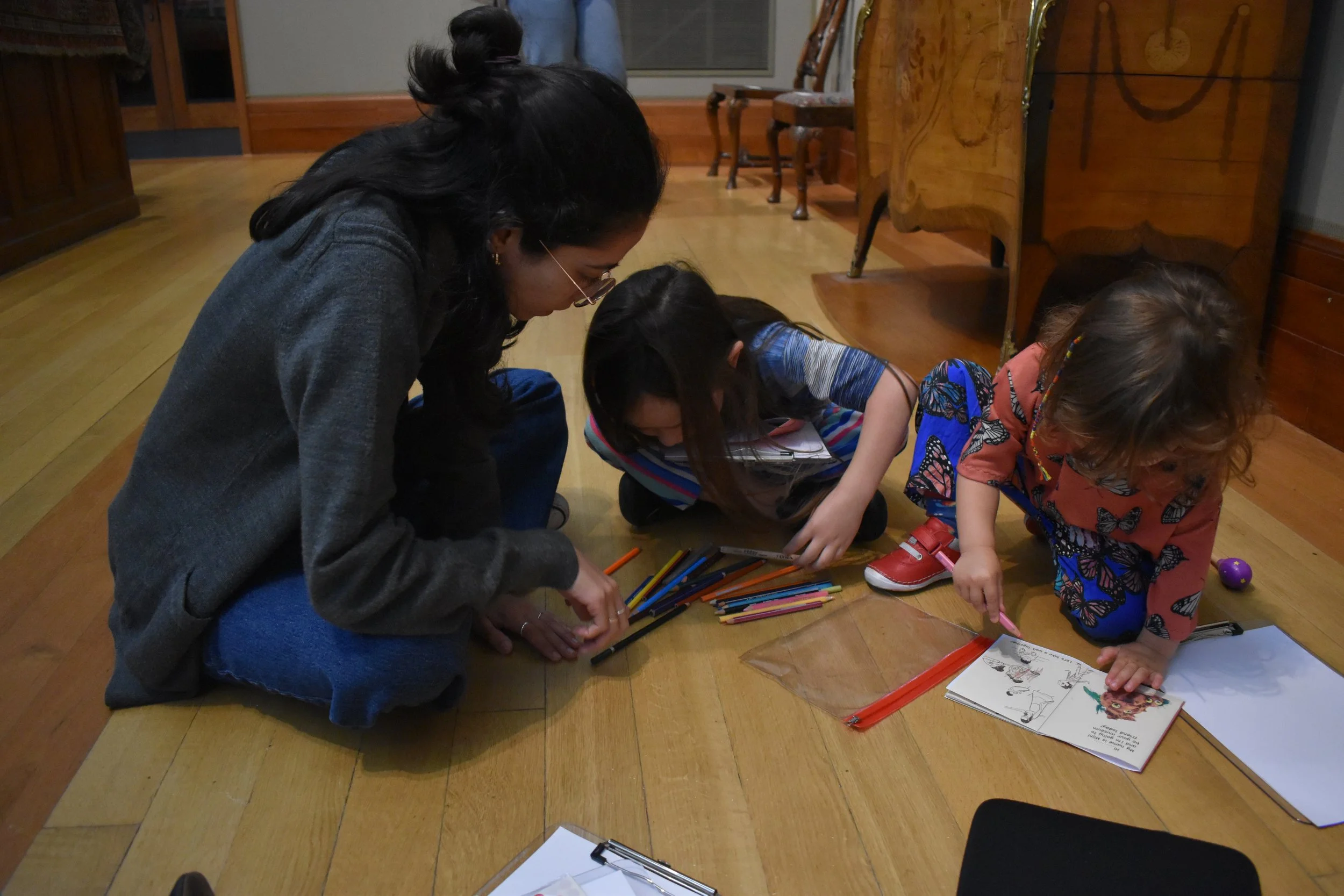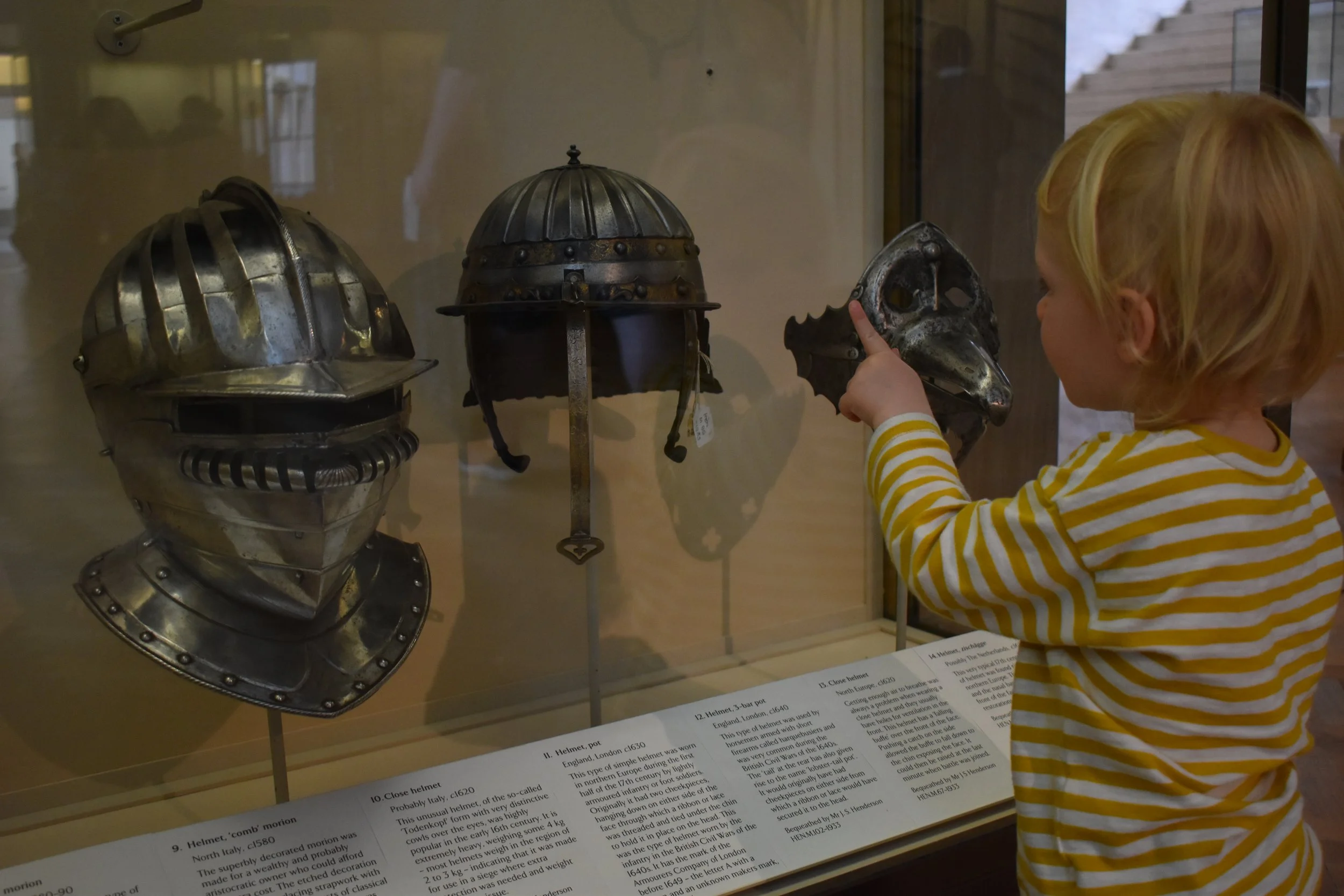The Museum and Me
The Museum and Me explores the ways in which playful museum interventions can enhance and increase parent-child interactions in order to support early years development goals, including language/communication and self-regulation. This physical multi-component toolkit consists of an A3 zine, a set of acrylic shapes for loose-parts play, and museum posters. The project output also consisted of a design research report detailing the co-design process, approach, methodology and future opportunities.
Read more about the project here.
Project Base: The Fitzwilliam Museum, University of Cambridge
Collaborators: Dr Kate Noble and Nicola Wallis
Funded by: Nesta x ArtFund
Medium: Physical Toolkit
Year: 2023
Research x Output
This investigation consists of (1) co-design of a museum resource through active engagement and creative development with children and their families (2) design and execution of a physical multi-component toolkit through rapid prototyping using the Museum’s existing resources and distribution channels to achieve the social impact objective. This project focuses on the creation of a physical prototype as opposed to a digital one based on initial conversations with parents about use, preferences and interest.
The research and physical kit have been created in close collaboration with experts from museum learning and early years education through a process of co-design sessions and semi-structured interviews with users and stakeholders. A mixed-methods approach was used to gather, analyse and interpret both quantitative and qualitative data from co-design sessions and semi-structured interviews. The data collection for qualitative data included the use of a camera and notes for observations and insights. A light adaptation of Braun and Clarke’s Thematic Analysis (TA) was used to generate themes from the co-design output.
Participatory Design Research and Rapid Prototyping
Team of 3 | Design Lead

As shown in the above figure, the overall process used is a Double Diamond Approach with different stages of the project drawing from relevant theoretical frameworks of museum curatorship, learning methods for young children and designing for play. The co-design sessions were spread across the month-long project to inform the research, with two visits between the discovery and define phases and one visit between the develop and deliver phases.
Study 1: Co-design with Families
To understand the child’s persona/s as identified by their parents.
To identify the primary sense that the child uses to explore the environment.
To understand the child’s favourite object/area/destination in the museum in order to get a sense of the kind of spaces children have an affinity for.
To decipher a family’s museum experience through parent-child interactions in order to identify the peak of both the most challenging and most rewarding experiences.

Images from a co-design session with Remy, Leo and Daniel


Excerpt from Miro research board highlighting initial explorations of the concept
The Blob Tree as used by Lucy describing Lily’s interactions, behaviour and energy in the museum
Empathy Map created from the child’s perspective to understand user journey and experience of a museum environment


